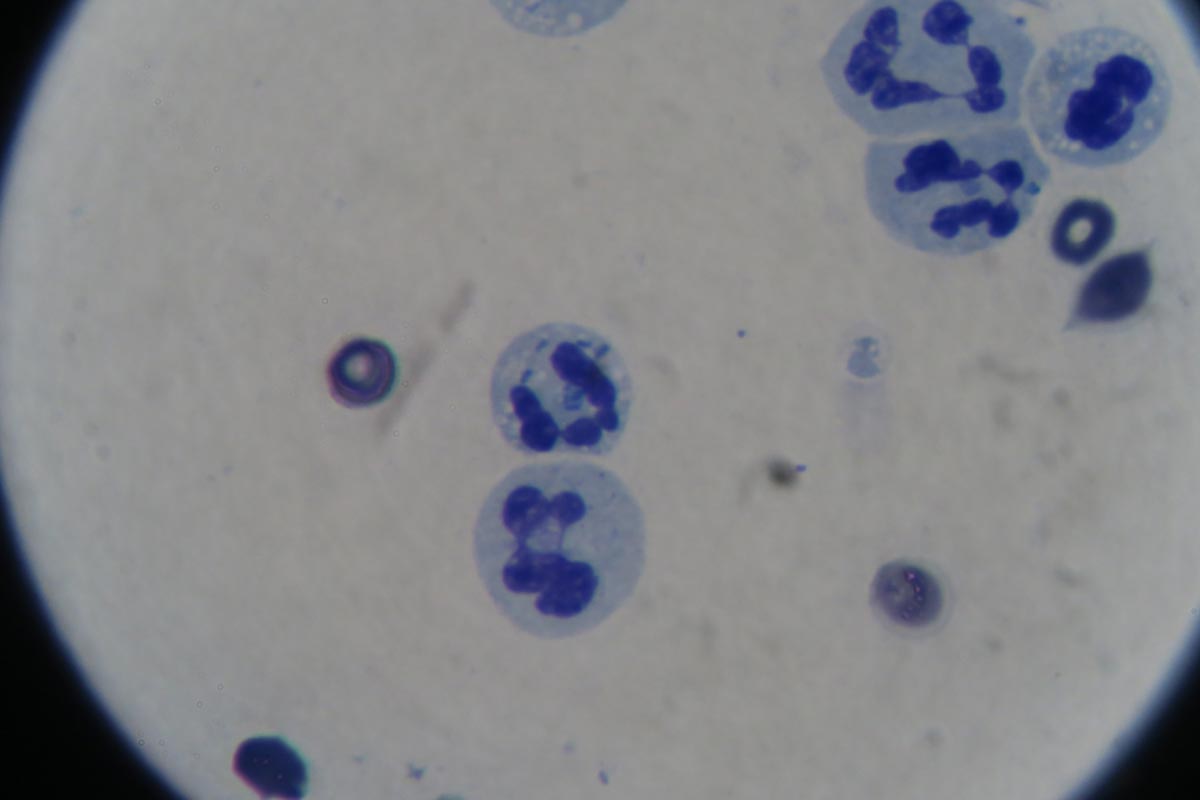Interpreting effusion samples can be confusing, so try to think of effusions as if you were collecting a blood sample.

Many of the in-clinic diagnostic tests that apply to blood samples also apply to effusions, such as:
- PCV/total protein
- smears
- glucose
- lactate
- potassium
- creatinine
- bilirubin
It’s not enough to only check the protein concentration of the effusion then classify it as either a transudate, modified transudate or exudate and leave it at that – there is more information left to extract from that sample.
Challenging diagnosis
Determining if an effusion is septic can be a challenge. Here are the steps I take.

- Perform a cytological examination of your effusion in the smear and look for inflammatory cells and the presence of bacteria. Look inside the cells as well as outside. If you don’t see bacteria it does not mean it isn’t a septic effusion, and only a couple bacteria are needed for me to call it septic.
- Glucose and lactate: You need to compare the glucose levels in the effusion with blood glucose levels. If the effusion glucose level is less than serum glucose, it is more likely you have a septic exudate. This makes sense in that bacteria would metabolise glucose in the effusion, leading to lower glucose levels. A by-product of metabolism is, of course, lactate. Therefore, you next need to check the lactate levels in the effusion and compare it to the serum lactate level. If lactate level in the effusion is more than the serum lactate level, then again you have more evidence you are dealing with a septic exudate.
Try to measure glucose and lactate from both blood and effusion samples at the same time on the same machine. Keep in mind glucose and lactate values are less accurate for monitoring for the presence of bacteria in post-surgical patients.
- Gerardo Poli is the author of The MiniVet Guide to Companion Animal Medicine – now available in the UK.

Leave a Reply